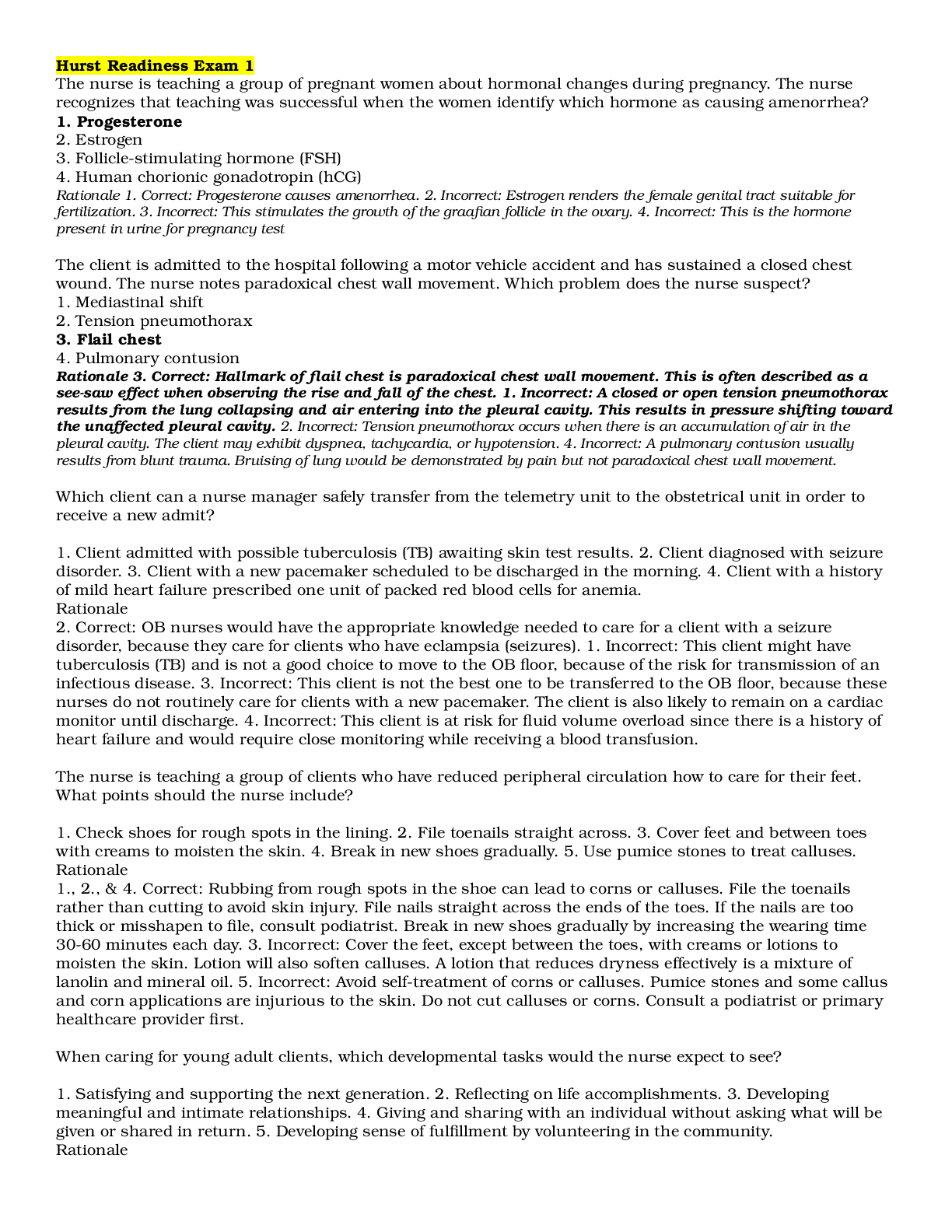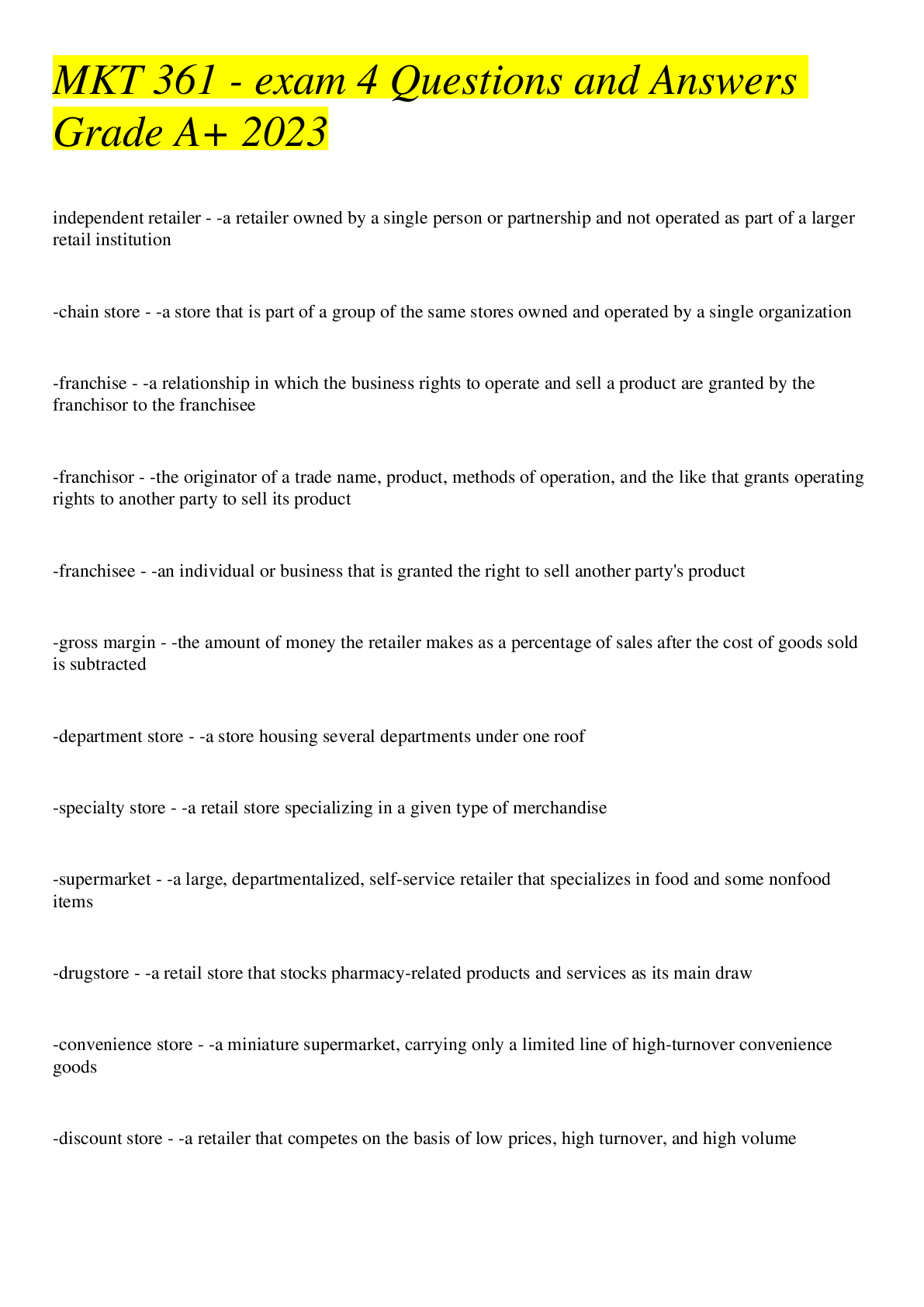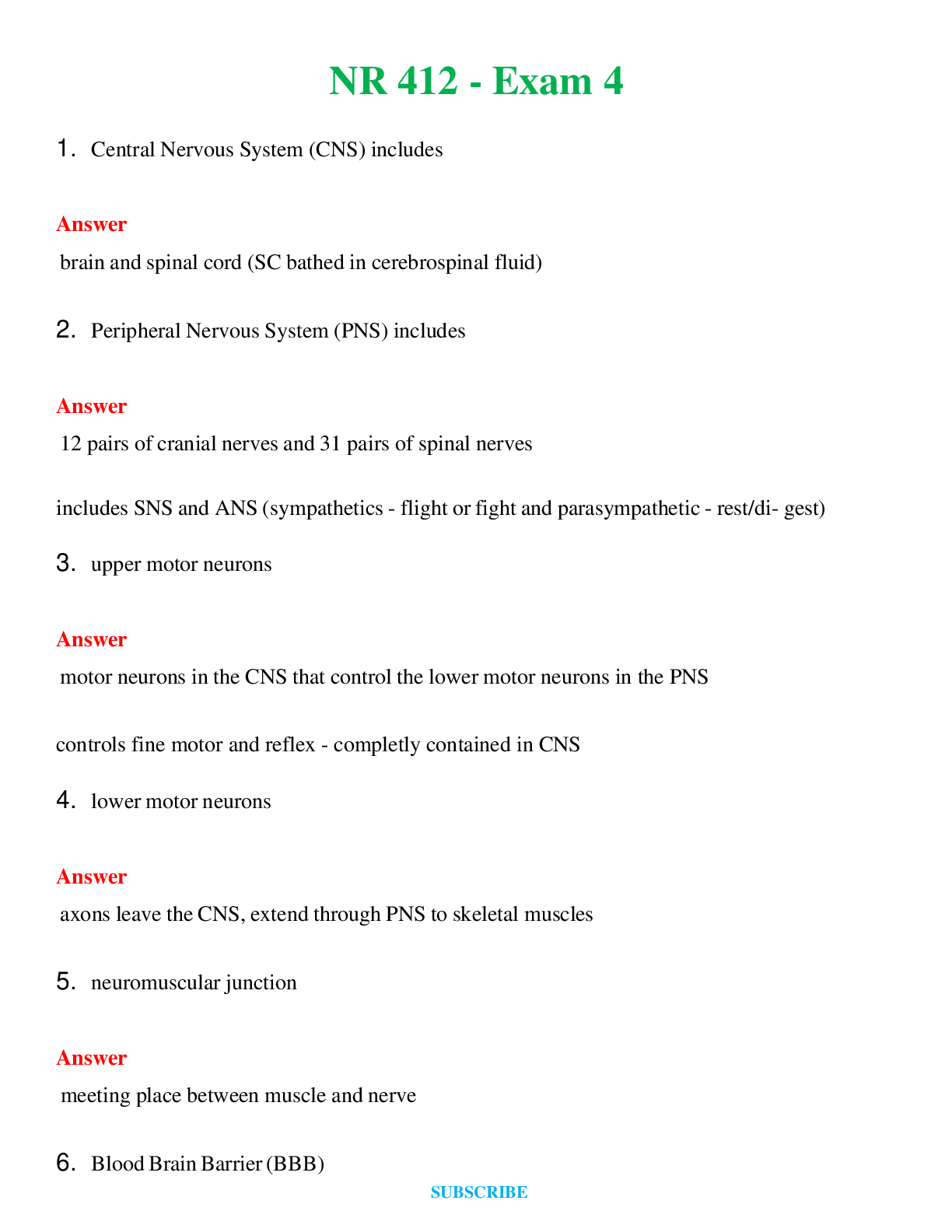Biology 180 - Exam 4 with complete solutions(2022)
Document Content and Description Below
metapopulation - ANSWER a population of populations connected by migration replacement rate - ANSWER average fertility required for each woman to produce exactly enough offspring to replace her and... her offspring's father community - ANSWER all species that interact in a certain area commensalism - ANSWER (+/0) one species benefits but the other is unaffected competition - ANSWER (-/-) individuals use the same resources - lower fitness for both consumption - ANSWER (+/-) one organism eats or absorbs nutrients from another includes -herbivory -predation -parasitism mutualism - ANSWER (+/+) both species interact in a way that confers fitness benefits to both coevolution - ANSWER a pattern of evolution where two species influence each others adaptations over time coevolutionary arms race - ANSWER repeating cycle of reciprocal adaptation interspecific competition - ANSWER individuals from different species use the same limiting resources intraspecific competition - ANSWER competition between members of the same species -water, space, sunlight, food etc niche - ANSWER a range of resources that a species is able to use or the range of conditions it can tolerate symmetric competition - ANSWER a decrease in fitness due to niche overlap - both species are affected equally asymmetric competition - ANSWER occurs when one species suffers a greater fitness decline than other species - usually depends on amount of overlap in niche competitive exclusion principle - ANSWER two species that occupy the same niche cannot coexist fundamental niche - ANSWER total theoretical range of environmental conditions that a species can tolerate realized niche - ANSWER portion of the fundamental niche that a species actually occupies, given limiting factors such as competition with other species fitness trade off - ANSWER inevitable compromises in adaptation niche differentiation - ANSWER evolutionary changes in resource use caused by competition over generations - aka resource partitioning character displacement - ANSWER evolutionary change in traits that allows species to exploit different resources - makes niche differentiation possible herbivory - ANSWER consumption of plant tissues parasitism - ANSWER a parasite consumes relatively small amounts of tissue or nutrients from another individual (the host) predation - ANSWER a predator kills or consumes all or most of another individual standing defense - ANSWER defenses against predators that are present even in their absence -energy inefficient inducible defenses - ANSWER physical, chemical, or behavioral defense traits that occur in response to the presence of a predator -energy efficient but take time to produce keystone species - ANSWER a species that has a much greater impact on the distribution and abundance of the surrounding species than its abundance and total biomass would suggest food web - ANSWER the network of exchanges of energy and nutrients among producers, consumers, and decomposers in an ecosystem disturbance - ANSWER any strong, short lived, disruption to a community that changes the distribution of living/nonliving resources disturbance regime - ANSWER most communities experience a characteristic type of disturbance - predictable frequency and severity primary succession - ANSWER disturbance removes soil and its organisms as well as organisms above the surface -glaciers, floods, volcanic eruptions, landslides secondary succession - ANSWER disturbance removes some or all of the organisms from an area but leaves the soil intact early succession - ANSWER time period after a disturbance that is dominated by species that are short lived, small in nature, disperse their seeds over long distances late succession - ANSWER time period after disturbance that is dominated by species that tend to be long lived, large, and good competitors facilitation - ANSWER the presence of an early arriving species makes conditions more favorable for the arrival of later species sampling effect - ANSWER more productive species are more likely to be found in areas with high biodiversity species richness - ANSWER how many species are present in a given community species diversity - ANSWER weighted measure that incorporates number of species with the species relative abundance latitudinal gradient - ANSWER species diversity declines as latitude increases ecosystem - ANSWER species present in a region + abiotic components primary producer/autotroph - ANSWER organism that can synthesize its own food from inorganic sources gross primary productivity (GPP) - ANSWER total amount of chemical energy produced in a given area and time period cellular respiration - ANSWER total energy needed to simply stay alive net primary productivity - ANSWER -energy that is invested in building new tissues or offspring -total amount of chemical potential energy that is stored in organic material NPP=GPP-R R=energy used in cellular respiration, or lost biomass - ANSWER quantitiative amout of organic material consumers - ANSWER eat living organisms decomposers - ANSWER obtain energy by feeding on the remains of other organisms or waste products trophic level - ANSWER organisms that obtain energy from the same type of source biomagnification - ANSWER pollutants increase in concentration at higher levels of the food chain nitrogen fixing plants - ANSWER increase nitrogen in soil by storing it in their roots and releasing it when they die -beneficial for other plants to grow -breaks N2 molecules into -NH4 global warming - ANSWER increase in the average temperature of the planet global climate change - ANSWER sum of all changes in local temperature and precipitation patterns that result from global warming greenhouse gas - ANSWER traps heat that has been radiated from earth and keeps it from being lost to space phenology - ANSWER timing of seasonal events biodiversity - ANSWER biological diversity genetic diversity - ANSWER total genetic information contained within all individuals of a population, species, or group of species -measured by the relative species of all genes present in a group endemic species - ANSWER species found in a particular area and nowhere else biodiversity hotspot - ANSWER regions that are in most urgent need of conservation action -areas where efforts to preserve habitat would have the highest return on investment overexploitation - ANSWER the main reason for the decline of marine species habitat loss - ANSWER the most important factor in the decline of terrestrial species -logging, burning forests, building housing developments habitat degredation - ANSWER reduction in the quality of habitat habitat fragmentation - ANSWER parsing of continuous areas of natural habitats into small, isolated fragments -can reduce habitats to a size that is too small to support some species -can force species into a metapopulation structure -creates large amount of degraded "edge" habitat exotic species - ANSWER a nonnative species that is introduced into a new area invasive species - ANSWER an exotic species (nonnative) that disrupts species native to the area -can change local biotic and abiotic environments [Show More]
Last updated: 1 year ago
Preview 1 out of 24 pages
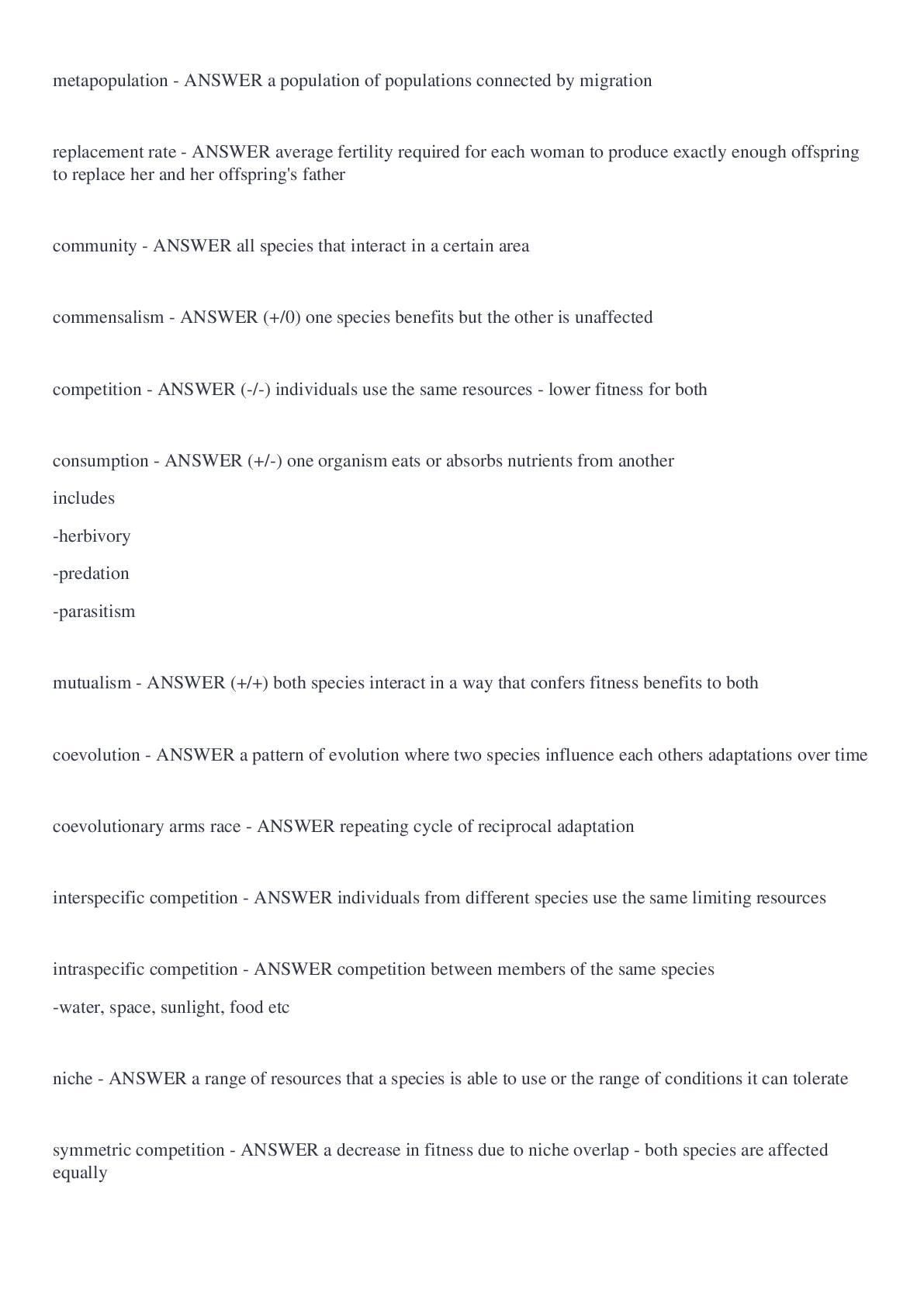
Reviews( 0 )
Document information
Connected school, study & course
About the document
Uploaded On
Jul 11, 2022
Number of pages
24
Written in
Additional information
This document has been written for:
Uploaded
Jul 11, 2022
Downloads
0
Views
51




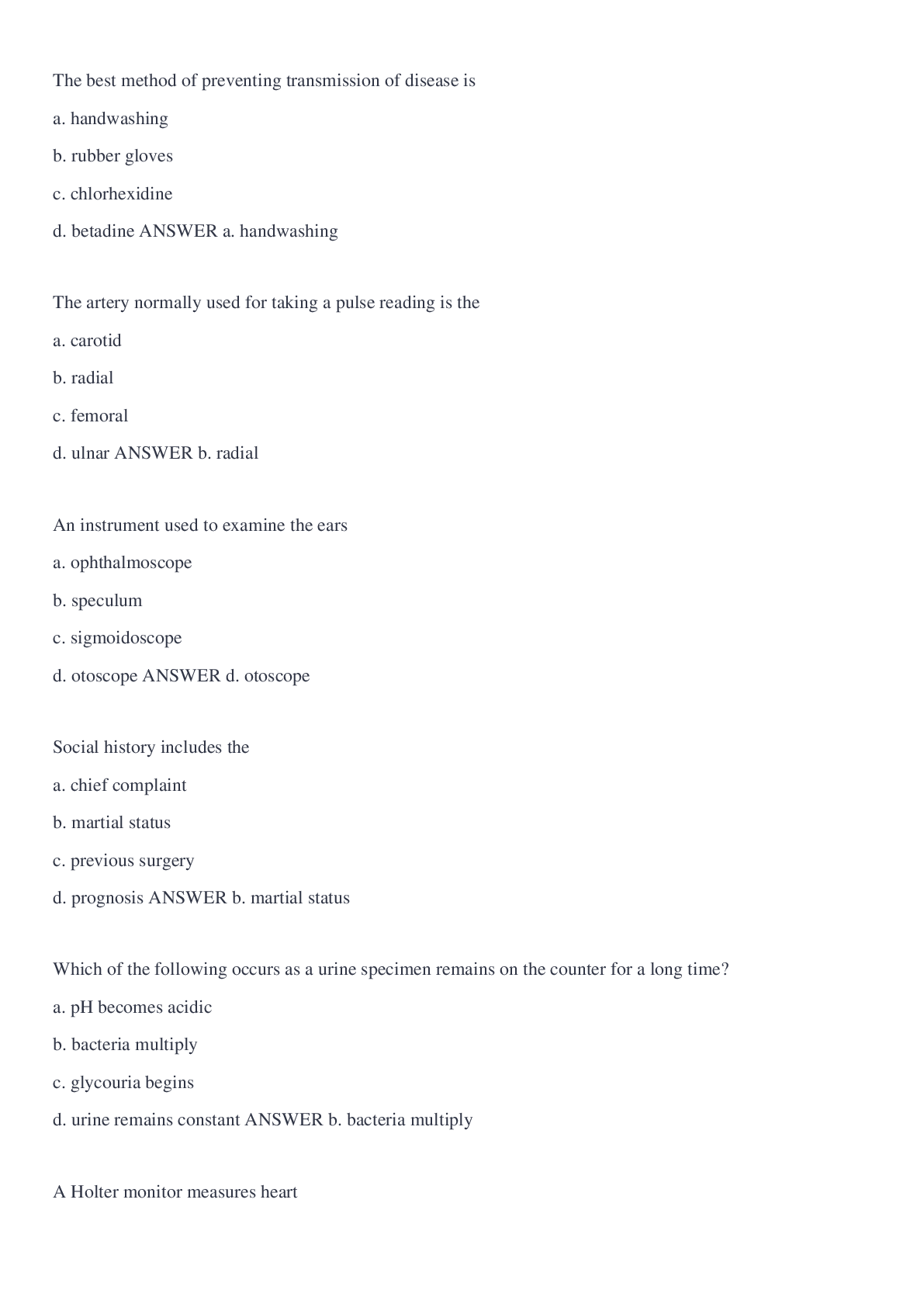
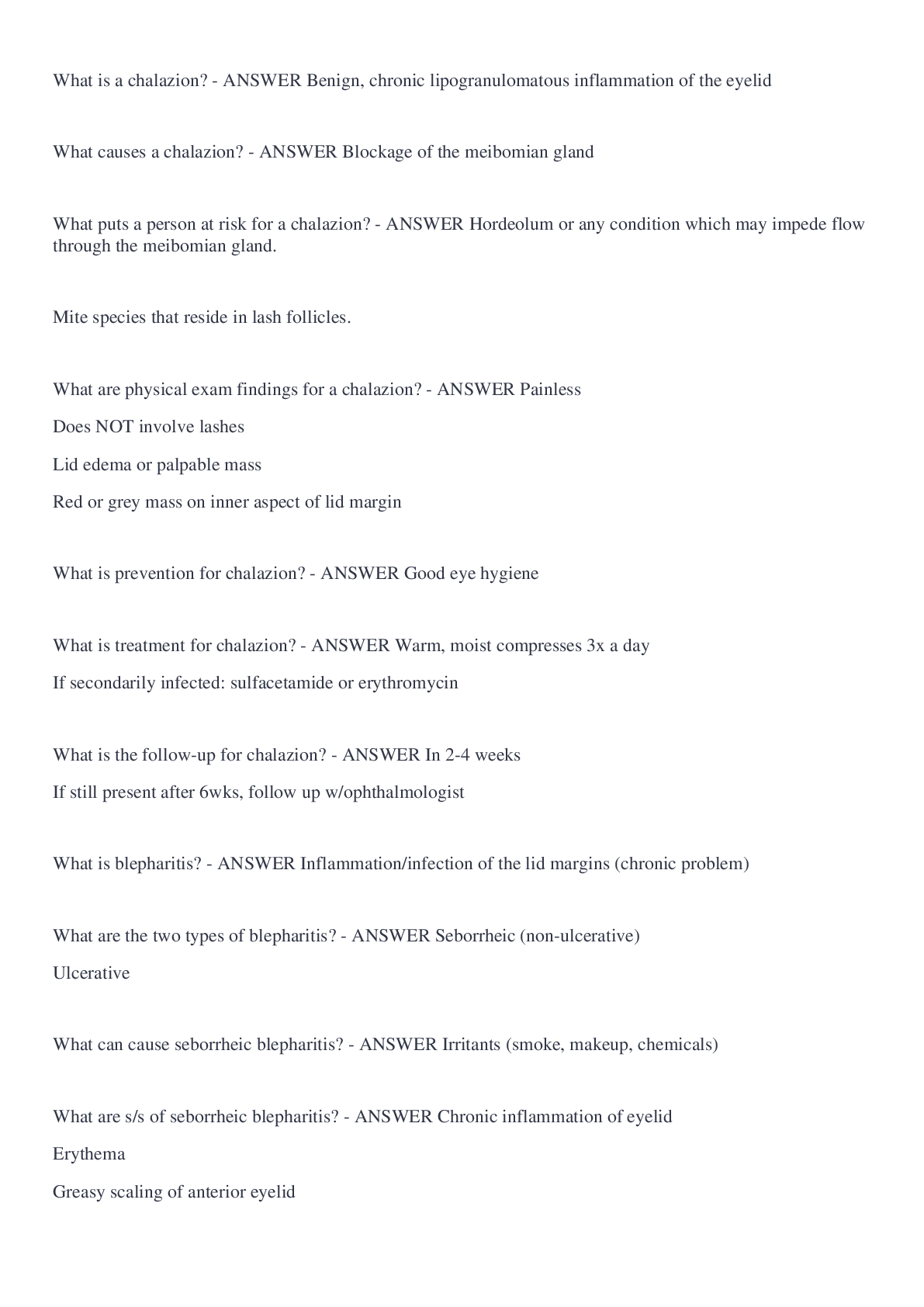

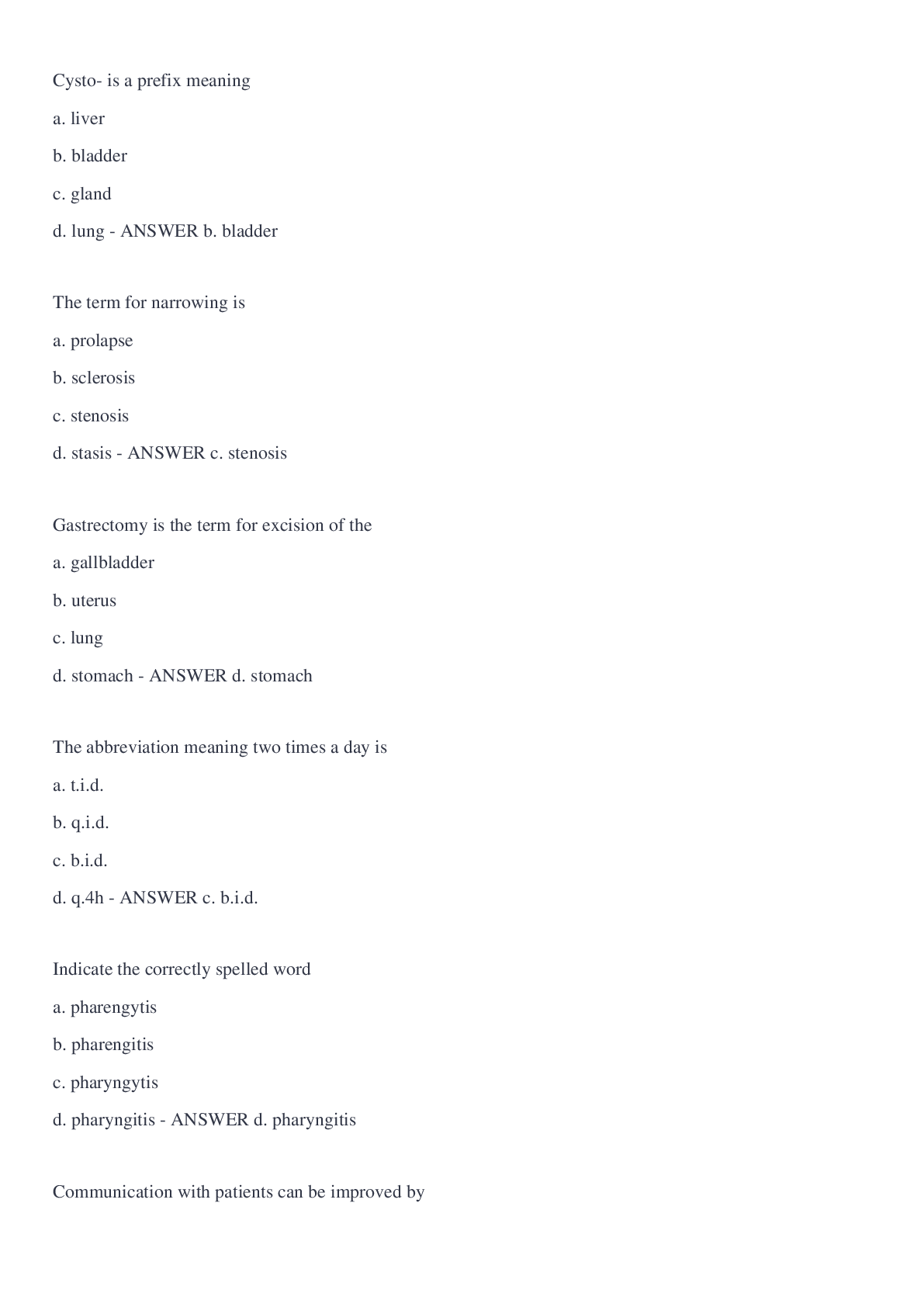



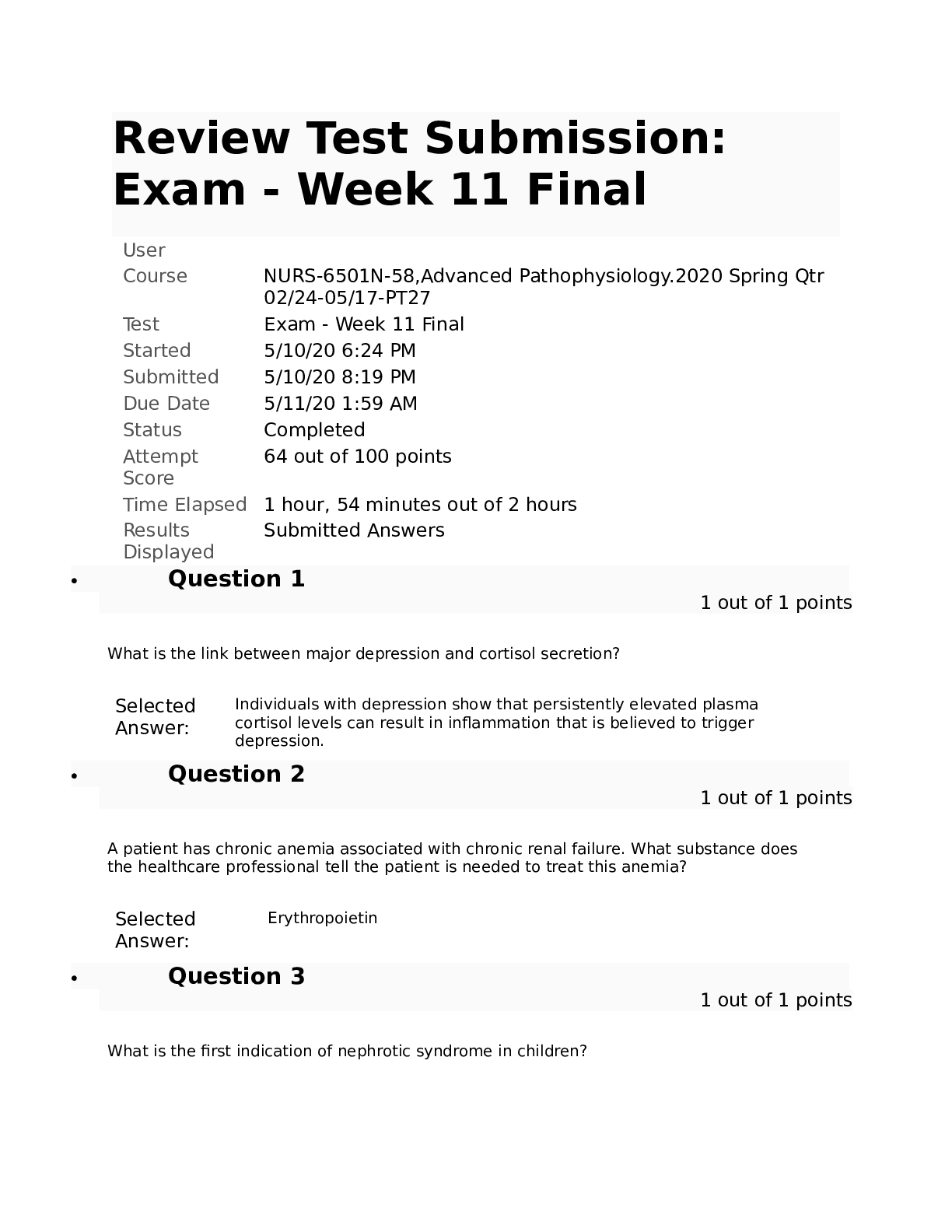
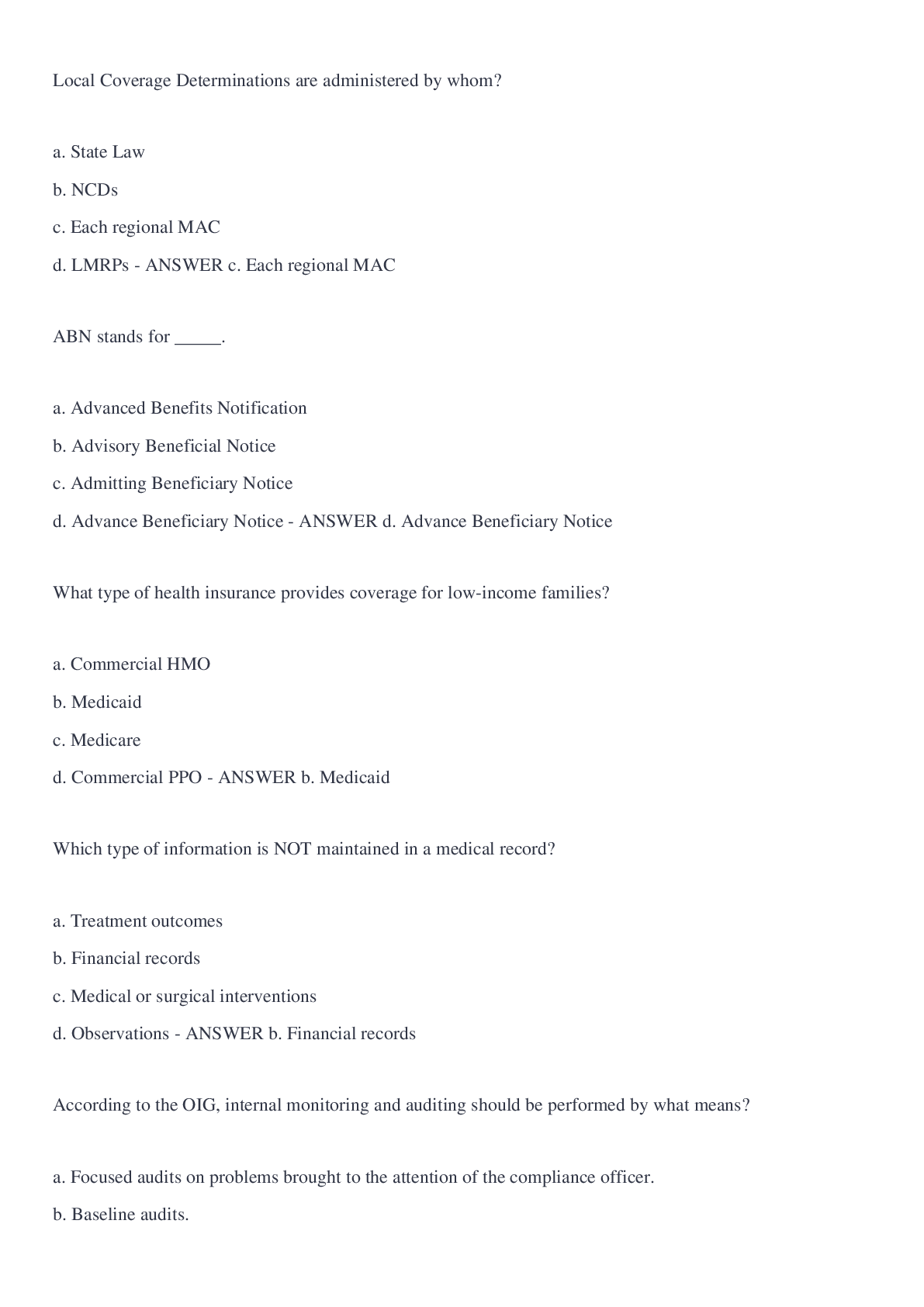

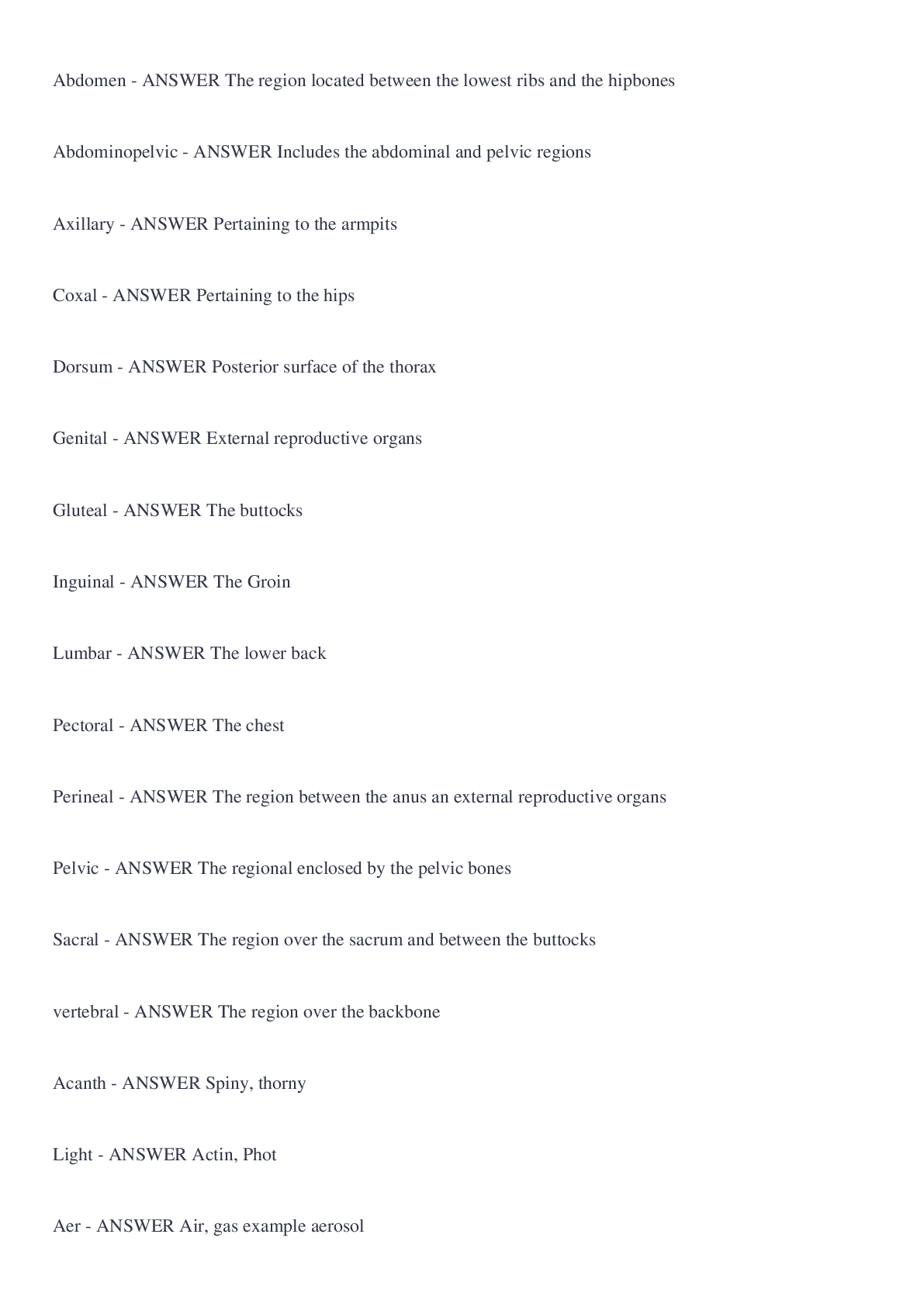

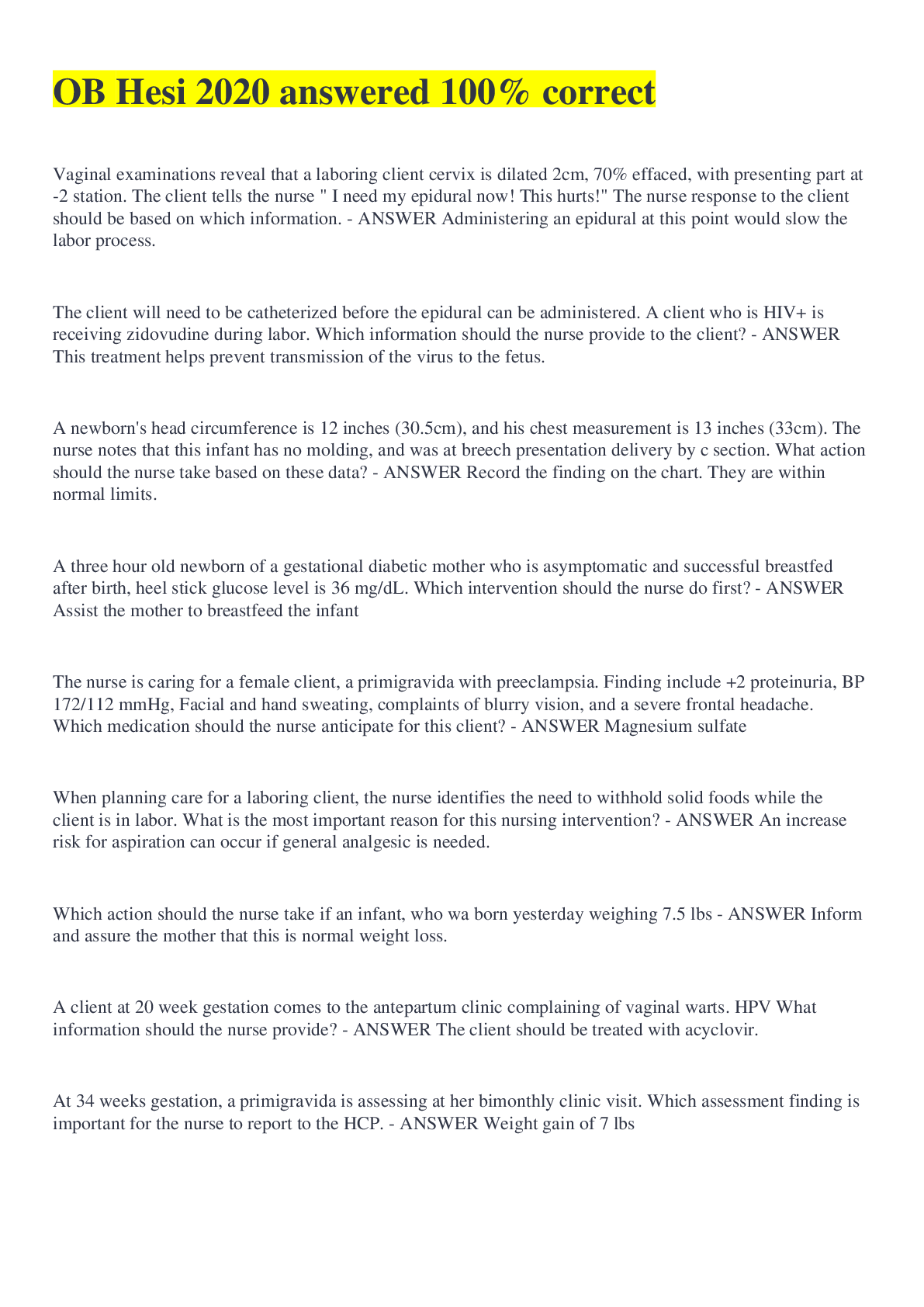
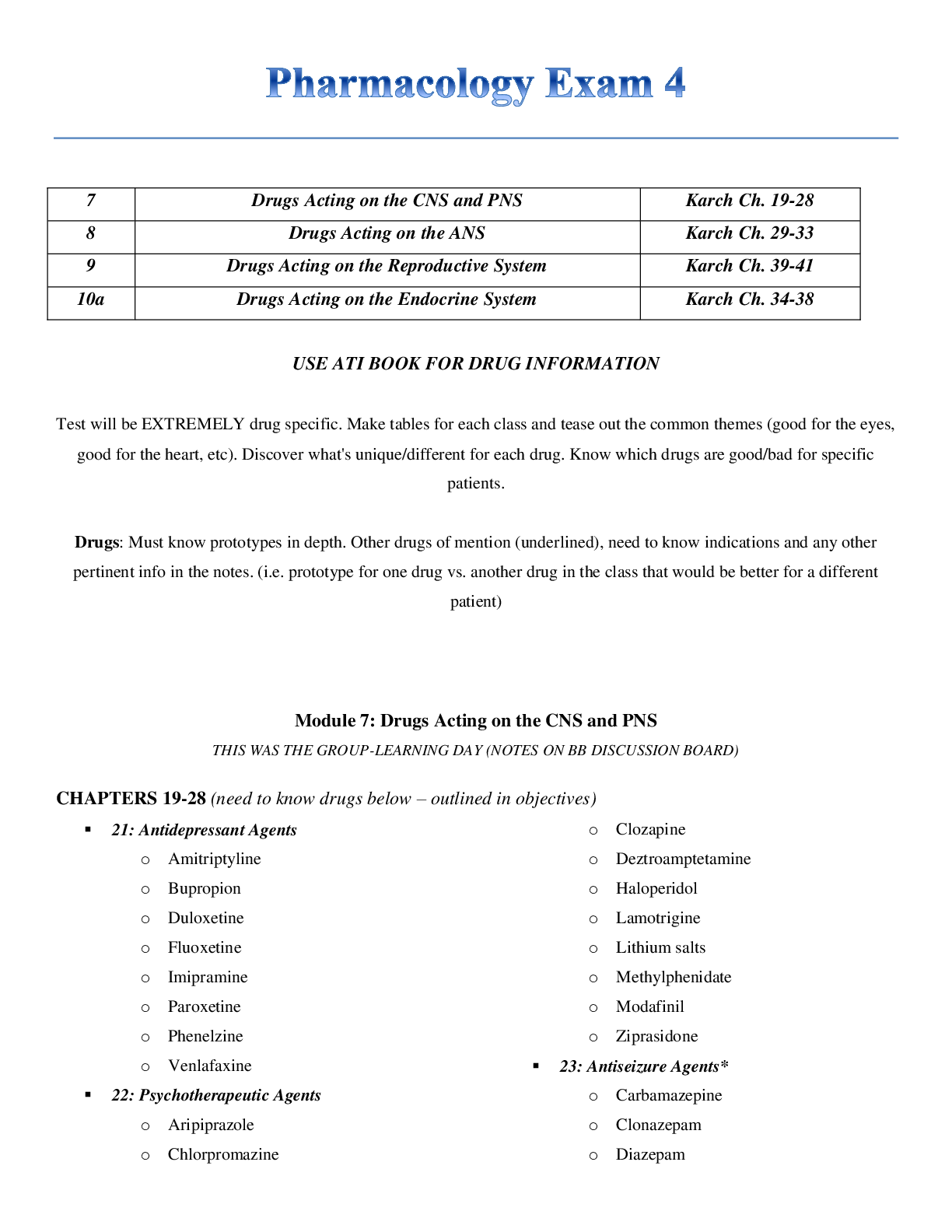

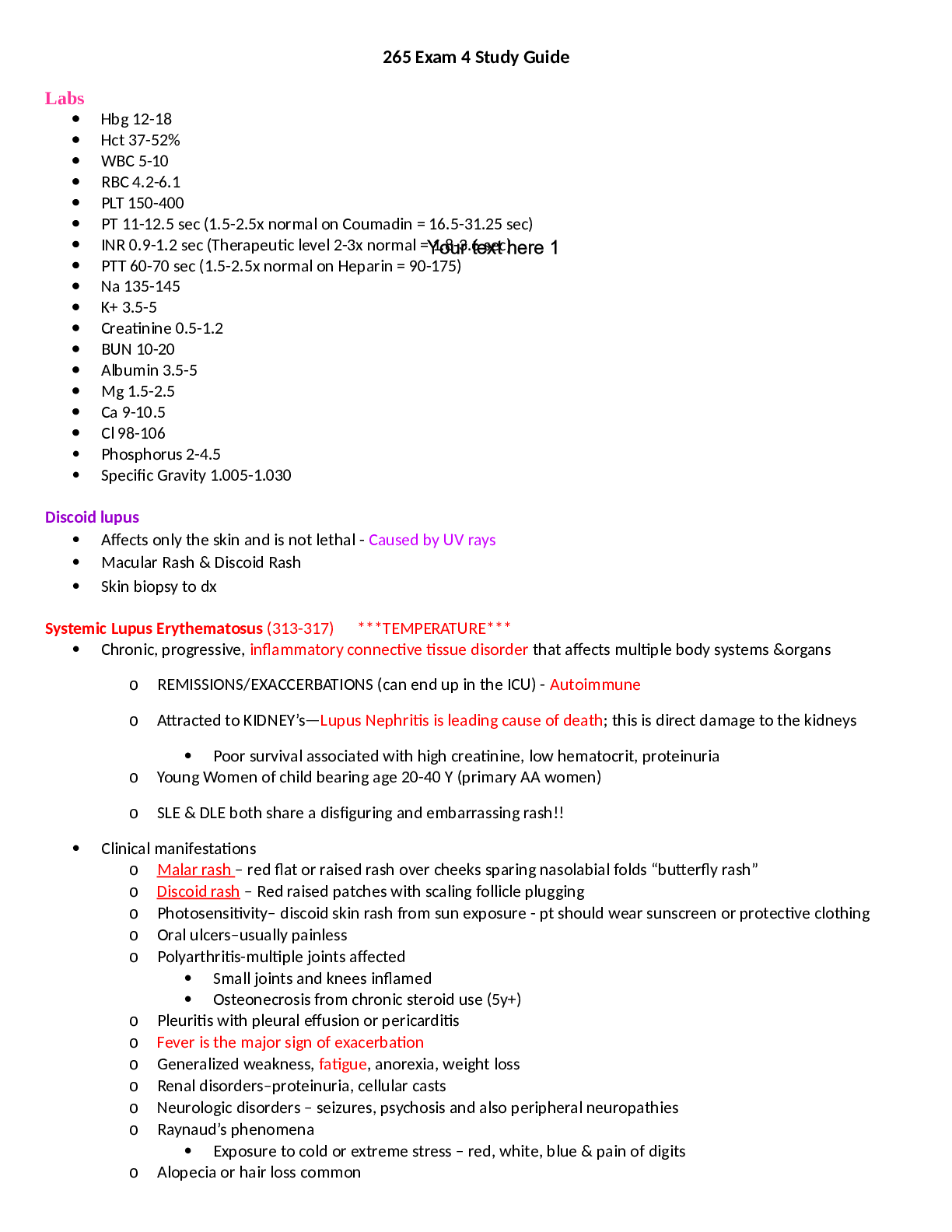

.png)


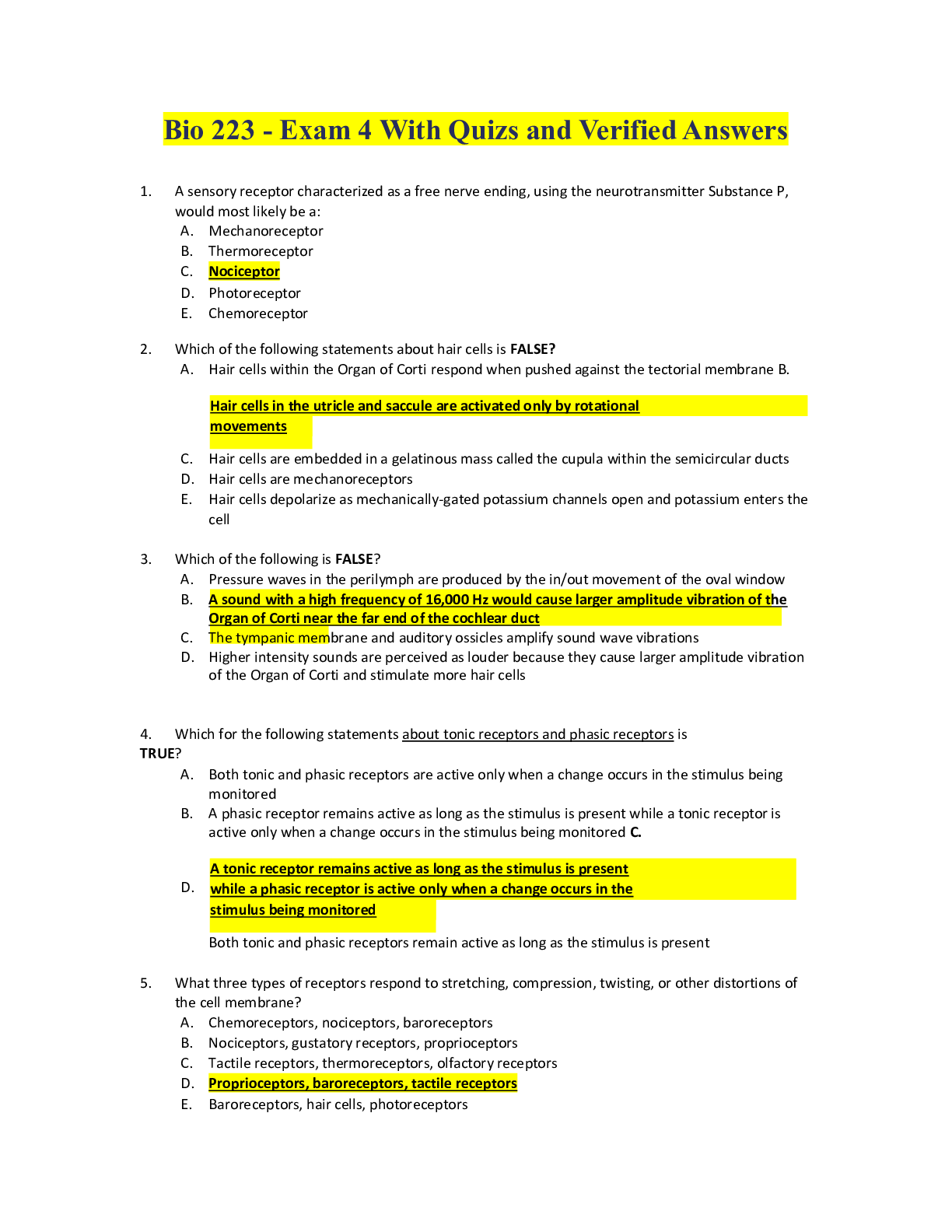
.png)
